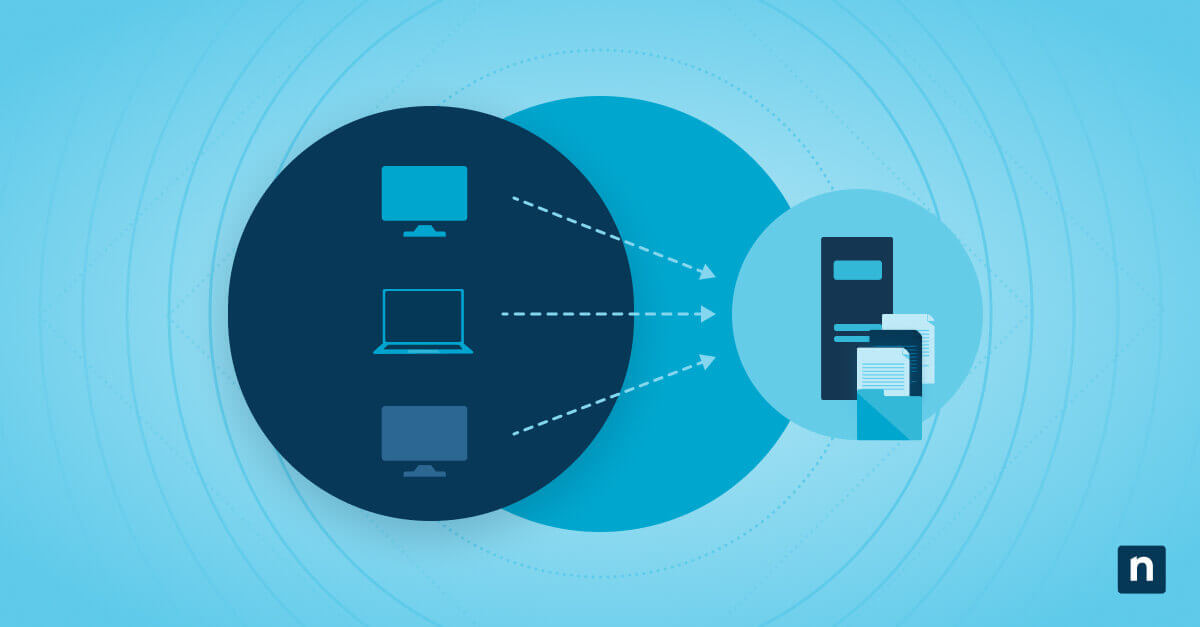Picture this: your organization has grown exponentially in the past couple of years and the IT team is having a hard time keeping up the rapid growth. You were able to get hiring approved but there is still so much work that your team is having to work overtime just to stay afloat. Plus, now the CEO is hoping to free up some of your usual operational workloads to focus on more strategic projects, leaving you wondering how you can manage all of these tasks with the bandwidth available. What would you do?
Enter IT automation. You may already be familiar with automation as a concept but haven’t had the ability to implement any cohesive automation processes. With IT automation, which is one of the fundamentals of IT, you can take any time-consuming, repeatable processes and schedule actions based on a variety of conditions such as time, device status, user onboarding, and more. This leaves more time for your team to take on more strategic projects instead of spending hours on manual, mundane tasks. It may be a bit of a time investment in the beginning, but a worthwhile one in the long run. (If you’re looking for guidance on how to create an automation action plan, we’ve just developed a new automation guide!)
You might also like our article on How to Automate Repetitive Tasks with PowerShell.
But before you jump headfirst into planning and purchasing, there are a few things you need to know. Whether you’ve just started with your IT automation journey or have already started making changes here and there, important steps need to be taken to be sure your efforts are impactful.
7 things to know before starting your automation journey
-
Don’t feel obligated to start with complex automation
Much of the time spent on a day-to-day basis is spent on repetitive tasks that can be easily made more efficient with automation. Though it may be tempting to focus on large-scale automation projects, most of the impactful automation is comprised of these small day-to-day tasks. If you’re just getting started, focus on these workflows before implementing something more complex. And remember, you can always start somewhere and improve over time!
-
Future-proof as much as possible
Your organization needs to be scalable and evolve over time. Any automation that you implement needs to be able to adapt when needed. Try to avoid hard-coding things and add variability.
-
Gamification is a great way to encourage automation
By incentivizing IT team members and end users to submit ideas for automation, you can get some great insight into processes that you may not have considered. You can get people involved by providing a tangible gift and opportunity to be part of the process. But be aware that any incentive shouldn’t be a burden to the end user, so see how involved they actually want to be.
-
Empower team members that are interested in automation
If your team is new to automation, you might have newer IT professionals that are looking to grow into new roles and learn new skills. Invest in your people and encourage team members to learn how to automate. Not only will it help your organization, but it will also improve your employees’ satisfaction.
-
Don’t silo your team
Automation will likely not just impact the IT organization, so be sure that you’re including necessary teams in any automation rollouts. Communicate impacts and how it will positively impact their own workflows!
-
Get executive buy-in
Because executives aren’t working on the front lines, they may be skeptical to the value of automation investments. To overcome this hurdle, you’ll need to outline the ways automation can improve IT operations but maybe more importantly, how automation can positively impact the overall budget.
-
Document EVERYTHING
Maybe one of the most important steps in your journey, make sure you’re documenting all of your processes. If something goes wrong with the automation workflow, someone leaves the company, or you’re starting a new process, you’ll be happy to have all of the documentation there as a valuable resource.
Discover your next automation project
You may be sold on the idea of IT automation but are a little stuck on what to implement first. Here are some ideas of potential tasks or projects that can help kickstart your journey:
- Automated tickets based on device status (including, but not limited to the below)
- Low disk space
- Device offline
- High resource usage
- End user onboarding and offboarding
- Domain account creation
- Role assignments
- Device provisioning
- Software installation
- Cloud logins
- Patch management
- Weekly network summary (including, but not limited to the below)
- Resource usage
- Server uptime and downtime
- Backup status
- Device performance
- Patch status
- Network and endpoint backups
- Snapshot cleanups (“snapshots older than X days are deleted”)
- Monthly compliance checks
- Network data log collection
- Password changes
- Enabling device firewalls / other security features
- Vulnerability scans
- Removal of extraneous accounts
- Help desk ticket responses
- Time of day submitted
- User role
- Type of ticket
- VM templates and deployment
- File migrations
This is just a short list of what you can do with IT automation, but if you’re looking for more ideas, here are a few Reddit threads full of incredible ideas:
- What automated tasks [have] you created in your workplace that improved your productivity?
- What’s something you automated?
- Automation Ideas
- What do you automate?
- Automation – Where did you begin?
- What are you automating at work?
- SysAdmin Professionals: What automation projects have you done that have had huge successes on efficiency and uptime and how?
And again, we’ve recently developed an automation guide (IT Manager’s Guide to Adopting an Automation Mindset), taking you step-by-step through an automation action plan from conception to execution! You can download the guide here: https://www.ninjaone.com/it-managers-guide-to-automation/








